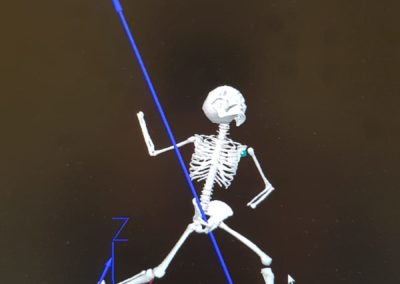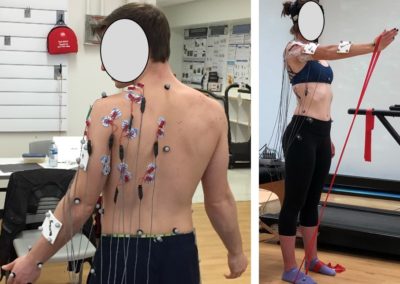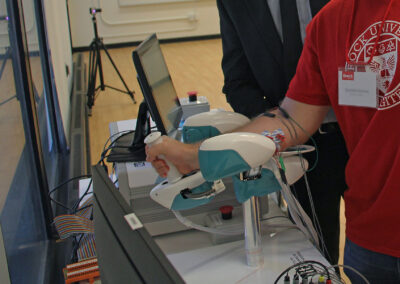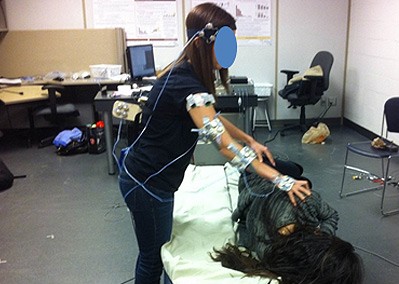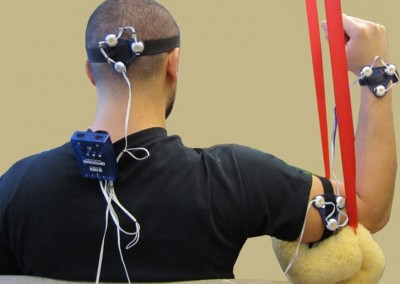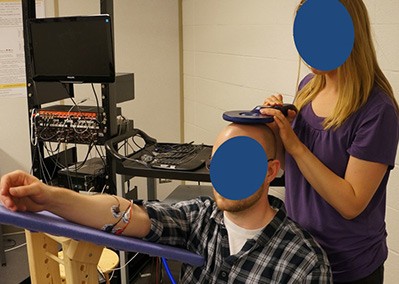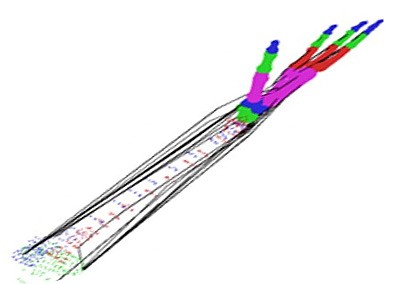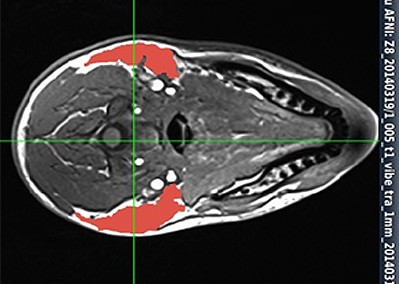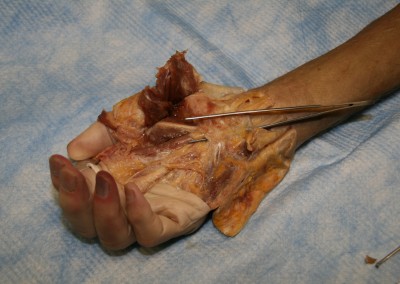Research
We interact with tools and objects every day. It is one of the most fundamental, yet vital, aspects of human movement. Yet all too often, people leave work at the end of the day feeling tired and suffering from aches or pains. This not only influences their performance at work, but their quality of life at home.
Although the human hand and forearm have unimaginable complexity, the basic activities of daily living, like reaching for a cup of coffee, come naturally to most people. But even simple movements require the brain to initiate a complex series of coordinated events.
Unfortunately, such a complex system lends itself to complex problems. Work-related pain and injury to the upper extremities, such as carpal tunnel syndrome and repetitive strain injury, are a common cause of sick leave and disability among working adults. As Canada Research Chair in Neuromuscular Mechanics and Ergonomics, Dr. Michael Holmes is trying to understand why some people develop workplace injuries while others who perform the same work do not.
Holmes and his research team are investigating how the brain determines muscle recruitment and control strategies, as well as how these influence the risk of injury.
By performing workplace simulations, they hope to better understand how pain and injury interact with neural and mechanical output. Ultimately, this will lead to workplace and tool design strategies that make occupational tasks safer and more efficient and help rehabilitate those with musculoskeletal and neurological impairments.
Here is a sample of our past and present work:
Haptic Wrist Robotics
Rehabilitation Robotics
Forearm fatigue and performance
Wrist stability during mechanical perturbation
Muscle CSA and volume reconstruction
Cadaver testing of the carpal tunnel
Cortical excitability to the forearm muscles
Skating Mechanics
Baseball Pitching Mechanics
Squat Mechanics
Elastic Resistance Exercise
Neck Pain and Proprioception
Low Back Loading during Patient Handling
Biomechanical Modelling
Funding
We owe a great thanks to all the people and organizations who have helped out with our lab and research, and continue to support us. The lab has been funded by the following organizations.
- Canada Research Chairs Program
- Natural Sciences and Engineering Research Council of Canada (NSERC) – Discovery Grants Program
- Canadian Foundation for Innovation (CFI)
- Centre of Research Expertise for the Prevention of Musculoskeletal Disorders
- MITACS
- MS Society of Canada
- Australian Spinal Research Foundation
- Workers Compensation Board of Manitoba
- UOIT Teaching Innovation Fund


